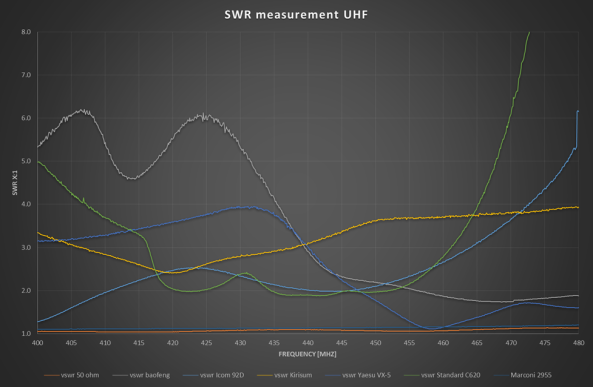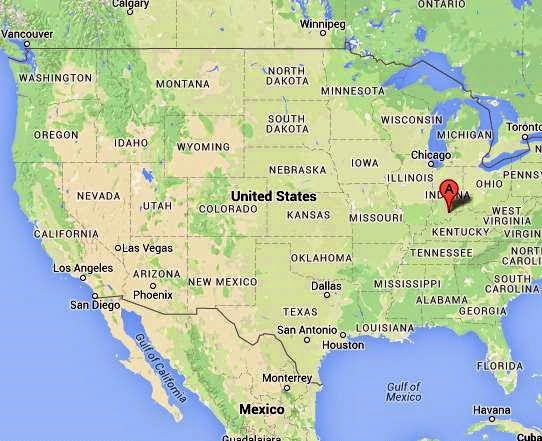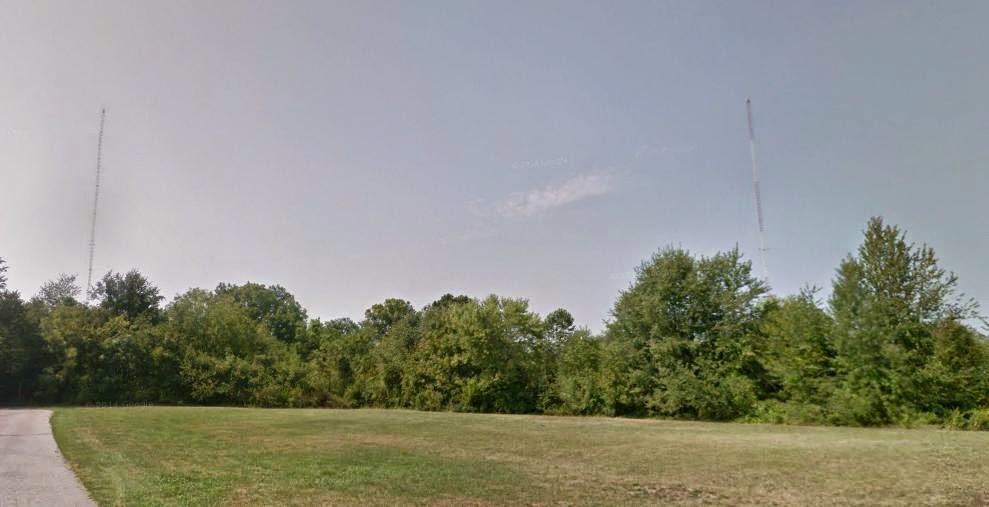 40m Pixie – bench test went well
40m Pixie – bench test went well
Well, it took a super-human effort on my part as a result of my extreme fatigue (brain bleed issue) but today I bench tested the little 40m Pixie kit I managed to build earlier this week. It is hard to explain just how exhausting this simple task was for me currently. I now need to recover my energy!
On receive a 1uV signal was perfectly readable and I could detect carrier on/off down to at least below 0.5uV. On TX it was putting out about 250mW into a 50 ohm load. On my antenna it was suffering some AM breakthrough, but less than I was expecting. I was using standard Walkman stereo headphones and a rechargeable 12V sealed lead acid battery. On a small 9V battery I’d expect about 100mW RF out, although this was not tried.
Overall, these results exceeded my expectations: it is more sensitive than I was expecting and the breakthrough of AM broadcasters is certainly OK in the day time. This is of course with no casing at all and no ATU. Using the fitted pot and fitted 1N4001 as a varicap it is easy to get the TX frequency and RX frequency to correspond, often an issue with very simple QRP rigs.
Next stage will be some on-air tests, but it most definitely works. Working the locals should certainly be possible. Sked with G6ALB (3km) arranged for 1000z Sunday on 7.023MHz CW.
UPDATE 2120z: There is a contest in full swing and several Russians and Asiatic Russians copied on the little 40m Pixie. I did not stay on long but there was no apparent BC interference noticeable. So, on a quiet night I should able to use the rig in the evenings. The main issue on RX seems to be the lack of AF filtering, so one has to use “the filter that is between the ears” i.e.the brain.
Roger Lapthorn, G3XBM, is a regular contributor to AmateurRadio.com and writes from Cambridge, England.
 2014 World Radiosport Team Championship
2014 World Radiosport Team Championship
From the World Radiosport Team Championship (WRTC) website:
The World Radiosport Team Championship (WRTC) is a competition between two-person teams of amateur radio operators testing their skills to make contacts with other Amateur Radio operators around the world over a 24 hour period. All teams use identical antennas from the same geographic region, eliminating all variables except operating ability.
WRTC2014 included 59 competing teams from 29 qualifying regions around the world. Competitors represented 38 different countries.
This is a unique contest in that the stations used are roughly identical so that operator skill is the main variable. I love watching these guys work the radios, especially the CW ops. Even if you are not a contester, take a look at this excellent video and enjoy radio hams having fun messing around with radios.
WRTC 2014 Documentary from James Brooks on Vimeo.
The post 2014 World Radiosport Team Championship appeared first on The KØNR Radio Site.
Bob Witte, KØNR, is a regular contributor to AmateurRadio.com and writes from Colorado, USA. Contact him at [email protected].
 Antenna testing is hard (II)
Antenna testing is hard (II)
This article follows up on this one. The title could also be: doing measurements on hand held radios is hard. Actually, some measurements I did in the past might not be so accurate after all.
Measuring in dBm
If you measure in dBm, what I always did, you assume that the device at the other end is 50 Ohms, just like the manufacturer promises you in the specs. Slowly but surely we are finding out that this is not always the case. As a result I might have to switch to microvolt (µV), a method which doesn’t require a perfect 50 Ohms at the other end.
Can’t we just convert it? 0.5 µV @ 50 ohms = -113 dBm, a piece of cake, right? No. You must know the actual impedance of the receiver if you want to convert from dBm to µV. Erik PE1RQF did some measurements on a few hand held radios to find out the true impedance. The outcome was, well, a bit scary.

If a device is 50 Ohms, the SWR should be 1:1. Only a perfect dummy load and the Marconi RF generator are.
What this means for us
What this outcome basically means is that generating cold numbers on sensitivity and antenna performance are nice, but don’t tell the whole story, or could be misleading.
- Antennas which prove to be the best performers (RX/TX, VSWR), tested under optimal conditions, are not necessarily the best performers on a specific brand/model of hand held radio.
- There are antennas which aren’t 50 Ohms at all, but could very well outperform everything else on the market because your radio isn’t 50 Ohms either.
Do the test yourself
The best example I can give you is this one: take a Baofeng BF-666S, 777S or 888S, use the stock antenna, and make notes of the performance in the field. Try to hit repeaters which are barely in range. If you have a field strength meter, measure field strength when transmitting.
Remove the stock antenna and replace it by a Nagoya NA-701, NA-771, the $3.79 antenna, or the Baofeng UV-B5 antenna. I tried all of these; just pick whatever 3rd party antenna you have. Repeat the tests.
What happened here is that the short stock antenna was the best of the bunch, all 3rd party antennas had a negative influence on the performance of this specific Baofeng model. The same 3rd party antennas mentioned above did improve the performance of the Baofeng UV-5R, often by a wide margin.
Exception to the rules
The funny thing is that reception suffered greatly too. This is quite uncommon and a sign that hand held radios don’t follow the rules. For example, if you just want to receive on 20 meters and your dipole is 2×6 meters instead of 2×5 meters, you would never notice the difference. With your hand held radio however you will.
Hans, PD0AC, is a regular contributor to AmateurRadio.com and writes from Almere, The Netherlands. Contact him at [email protected].
 Amateur Radio Weekly – Issue 50
Amateur Radio Weekly – Issue 50

Verizon issues furious response to FCC, in Morse code
Verizon wrote a press release in Morse code and set the date as “1934” to make the point that the FCC is taking us backward in time.
Ars Technica
No one in the shack as station logs 4200+ contacts in DX CW contest
The group of six operators operating as K3TN in the recent ARRL International DX Contest (CW) may have made Amateur Radio history by mounting the first completely remote-controlled multioperator contest effort.
ARRL
K1N interviewed by Mediterraneo DX Club
When you listened to us working North America, we could cruise right along at 300-350 Q’s/hour. When working Europe, we would be extremely lucky to see rates of 125 Q’s/hour.
Mediterraneo DX Club
Mobilinkd Bluetooth APRS TNC
With your radio, your Android phone and this TNC, you have everything you need to get started with APRS.
mobilinkd.com
QRadioPredict
QRadioPredict is experimental software for VHF-UHF propagation prediction and radio coverage analysis.
YO8RZZ
K1N’s final press release
The DX world is very complimentary of our results… 140,000 QSOs and over 30,000 uniques.
Southgate
Amateur Radio club “takes over” shortwave channel
When German national broadcaster the Deutsche Welle closed down a 500 kW shortwave broadcast transmitter near Munich, an entity headed and operated by hams applied for and was granted the vacant channel of 6070 kHz.
ARRL
NASA ringtones
Here’s a collection of NASA sounds from historic spaceflights and current missions. We have included both MP3 and M4R (iPhone) sound files to download.
NASA
How to
Field Day info “Dashboard” using N1MM Logger
The intent is to connect a computer or i-device to an HDTV and have a browser running full-screen showing current progress.
KN4QD
Minimalist VHF Software Defined Radio
I think the future of radio hardware is a piece of wire connected to a GPIO pin. The rest of the radio will be “gcc compilable” free software running on commodity CPU horsepower.
ROWETEL
Ford F-150 Ham Radio installation
After acquiring a Ford F-150 truck last year, I’ve been working on getting a ham radio installed in it. I used a Yaesu FT-8900 that does FM on 10m, 6m, 2m and 70cm.
AmateurRadio.com
Video
WRTC 2014 Documentary
World Radio Team Championship documentary.
WRTC
ISS SSTV in a Brazilian School
Paulo (PV8DX) turned the recent Slow Scan TV transmissions from the International Space Station (ISS) into an education outreach opportunity for amateur radio.
AMSAT UK
Amateur Radio Weekly is curated by Cale Mooth K4HCK. Sign up free to receive ham radio's most relevant news, projects, technology and events by e-mail each week at http://www.hamweekly.com.
 BCB DX – Two New States
BCB DX – Two New States
Being located on the eastern shoreline of Mayne Island, the direction towards all of the U.S.A. is over many miles of saltwater, so my main interest is in domestic / U.S.A. DX.
Wednesday evening netted two new states on the BCB ... Kansas and Indiana, for states #27 and #28 respectively, both heard on the Perseus SDR and my 10' x 20' amplified loop.
KWOD, on 1660KHz, identifying as "The Business Channel", was logged during a short top-of-the-hour fade-up at 0600z (10PM local time). Their night power is listed as 1,000 watts while their day power is 10,000 watts.
 |
| KWOD - Kansas courtesy: https://www.google.ca/maps |
 |
| KWOD Towers courtesy https://www.google.ca/maps |
The transmitter site is located in the middle of a quiet residential district of older homes ... on all four sides.
I shudder to think what RFI problems those living in the adjacent homes must suffer when they are on daytime power!
 |
| WSLM - Indiana courtesy :https://www.google.ca/maps |
Their phased antenna array puts their main lobes, due east and west, so evidently I was catching the northern edge of their pattern.
 |
| courtesy: https://www.google.ca/maps |
See what you can hear their during the short recording made of the "Country WSLM" weather report
I have yet to check last night's recordings to see if conditions have held-up for two night's running ... more later if so.
Steve McDonald, VE7SL, is a regular contributor to AmateurRadio.com and writes from British Columbia, Canada. Contact him at [email protected].
 Frog 40m transceiver
Frog 40m transceiver
This is the Pixie’s “big brother”. I have mentioned it before in this blog. It has more power than the Pixie and a better RX. Best of all it costs just over £15 built with free shipping from Hong Kong.
Roger Lapthorn, G3XBM, is a regular contributor to AmateurRadio.com and writes from Cambridge, England.
 40m Pixie
40m Pixie
Yesterday I found my rechargeable 12V battery and charged it up. I also checked the Pixie I built as a kit for dry joints and shorts. As all looks good, I hope to test this on the air over the weekend or early next week.
There are a couple of locals I’d like to test with initially, although I am expecting to suffer from AM breakthrough mainly from broadcast stations very close to our 40m band. Probably there would be less breakthrough in the daytime? My antenna is short and low on 40m (a Par triband end-fed covering 10m/20m/40m) so any contacts will be good!
I can test it first on a signal generator and then a power meter. If it works, I’d expect a sensitivity of around -100dBm and a power out of around 200mW on 40m. We’ll see. Even -80dBm and 100mW would be enough to work locals as long as AM breakthrough is at a manageable level.
Roger Lapthorn, G3XBM, is a regular contributor to AmateurRadio.com and writes from Cambridge, England.
















